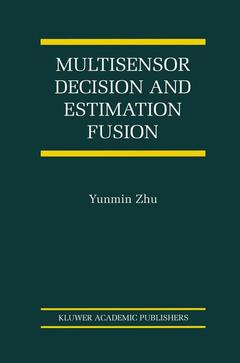YUNMIN ZHU In the past two decades, multi sensor or multi-source information fusion tech niques have attracted more and more attention in practice, where observations are processed in a distributed manner and decisions or estimates are made at the individual processors, and processed data (or compressed observations) are then transmitted to a fusion center where the final global decision or estimate is made. A system with multiple distributed sensors has many advantages over one with a single sensor. These include an increase in the capability, reliability, robustness and survivability of the system. Distributed decision or estimation fusion prob lems for cases with statistically independent observations or observation noises have received significant attention (see Varshney's book Distributed Detec tion and Data Fusion, New York: Springer-Verlag, 1997, Bar-Shalom's book Multitarget-Multisensor Tracking: Advanced Applications, vol. 1-3, Artech House, 1990, 1992,2000). Problems with statistically dependent observations or observation noises are more difficult and have received much less study. In practice, however, one often sees decision or estimation fusion problems with statistically dependent observations or observation noises. For instance, when several sensors are used to detect a random signal in the presence of observation noise, the sensor observations could not be statistically independent when the signal is present. This book provides a more complete treatment of the fundamentals of multi sensor decision and estimation fusion in order to deal with general random ob servations or observation noises that are correlated across the sensors.



